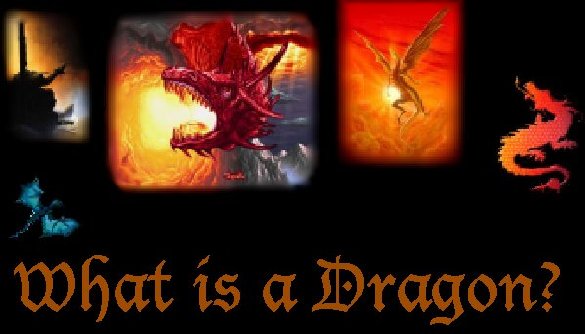

Random House Webster's College Dictionary
drag-on (drag`en), n. (Gk, drakon, kind of serpent, probably
orig. epithet, akin to derkesthai to look) 1. a mythical monster
generally represented as a huge winged reptile with a crested head, often
spouting fire. 2. Archaic. a huge serpent or snake.
Dragons are one of the most common of the classical myths. Nearly every culture has some type of monster or huge lizard that is capable of breathing fire or controlling weather. Dragons come in all shapes and sizes, colors and appearances, good and evil; how the dragon looks, what its temperment is, what it's alignment (good vs evil) is, depends upon which culture is relating the story.
They can be known by many names: wurm, wyrm, drake, lung, dragon, hydra. Descriptions of their temperment range from the benevolent Puff to the terrible Smaug of J.R.R. Tolkien's famous novels. Disney's dragon in Sleeping Beauty, the German giant-turned-wyrm Fafnir, the Babylonian queen of darkness Tiamat; the list goes on.
They are typically covered with scales like a fish, and many myths say they are able to breath fire as a weapon. Many have magical powers, such as the ability to control the weather, fly without wings, immortal life, the ability to change their shape at will, telepathy. Some dragons may have a modification of their breath weapon (frost, lightning, gas) but this appears to be purely a fabrication of fantasy role-playing games and the myths they spawn.
This editorial sets out to explain dragons as objectively as possible.
It is constantly being updated as I get time to add more parts to it.
| Article: Dragons | The Encyclopedia Mythica |
| Draconian.com: What is a dragon? | |
© Copywrite 1998, Sarah Pearson. Realm of the Dragon Queen is a private homepage; it makes no claims to be either commercial nor educational. Any information found on this page was not plagerized in any way; any similarities between seperate parts is merely a feeling of like minds.